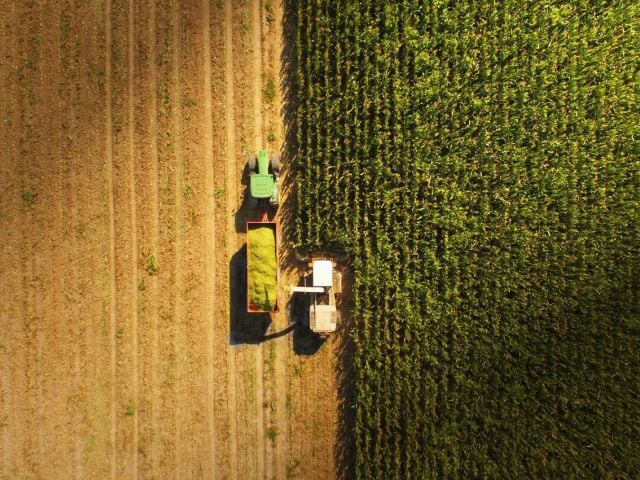
Almost everyone agrees: Permanently restoring hard-to-farm cropland with trees and grasses that can act as carbon sinks is a good way to build soil carbon.
But the Department of Agriculture’s Conservation Reserve Program, or CRP – the nation’s largest private lands conservation program – falls far short of what’s needed to promote soil carbon. And House Republican proposals in the ongoing farm bill talks could make that worse.
Congress should increase the amount the USDA pays farmers to convert hard-to-farm land to trees and grasses, make it easier for farmers to enroll in longer-term contracts, and make building soil carbon a central goal of the CRP. But House Republicans are trying to move the program in the opposite direction.
If we measure the success of a USDA conservation program by its soil health impact, the CRP is clearly failing.
Low priority for the CRP
Building soil carbon has not been a main goal of the program, but this must change. A provision tucked into the 954-page farm bill developed by the House Agriculture Committee would move CRP in the opposite direction.
The voluntary CRP provides farmers with annual rent payments and cost-share assistance to encourage them to return sensitive land to its natural state by planting grasses and trees. After landowners apply, the USDA employs a tool called the Environmental Benefits Index, or EBI, to decide which land to accept.
But the EBI gives very little weight to building soil carbon. It gives much more weight to soil erosion and wildlife benefits. In the most recent signup, the USDA allotted up to 10 points out of an available 395 to the potential carbon sequestration benefits of land offered.
As a result, the land with the most potential to build soil carbon is not necessarily being enrolled in the CRP. The American Enterprise Institute recently concluded that if one of the CRP’s main goals is to combat climate change by improving soil health, its acres are poorly targeted.
Other scholars say giving greater weight to carbon sequestration in CRP participation would significantly change which acres are enrolled. One scholar says a “carbon capture CRP” could produce more benefits than “much debated, currently unproven” carbon markets.
Increasing soil carbon
Recent research shows that if the locations of CRP acres were selected at random, the program would store more carbon in the soil than it does with the CRP acres in their current locations. As of 2020, CRP acres likely store 9 percent less carbon in soil than they would if located at random.
This research suggests that, to store the most carbon in soil, CRP acres should be concentrated in states like Illinois, Indiana, Iowa, Kansas, Kentucky, Missouri, Nebraska and Ohio, and land along the Mississippi River. (See Figure 1.) These areas have soil that is less sandy and better at storing carbon.
Figure 1. Locations with the most potential for soil carbon sequestration
*Mineral associated organic carbon (MOAC) and megagrams of carbon per hectare (Mg C ha)
Source: Seth Spawn-Lee, Ph.D., University of Wisconsin-Madison, Space and Time for Natural Climate Solutions in Agricultural Landscapes.
Long-term or permanent commitments to convert hard-to-farm land to trees and grasses are the best way to build soil carbon. But few farmers are committing to soil carbon in the long term. As of September, the vast majority of CRP acres are enrolled through short-term contracts that allow the land to be plowed up after contracts expire, potentially releasing soil carbon back into the atmosphere.
Fewer than 750,000 acres are enrolled through two CRP subprograms, CLEAR30 and the Conservation Reserve Enhancement Program, with bigger soil health benefits and long-term options for farmers.
Lowering the bar
Rather than setting and maintaining a high bar for land accepted into the CRP, the USDA has gradually set lower standards for CRP enrollment and accepted more offers, so land with fewer environmental benefits is enrolled. (See Figure 2.)
In 1997, the USDA required an EBI score of 259 for land to be accepted into the CRP, and less than 70 percent of offers were accepted. In 2024, the required EBI score was 188, and more than 78 percent of offers were acceptable. In at least one state, 100 percent of continuous enrollment offers were accepted. A lower bar helps boost enrollment levels but means land accepted into the CRP produces fewer environmental benefits.
Figure 2. CRP EBI cutoffs from 1997 to 2022

Source: USDA.
While USDA has increased incentive payments to encourage enrollment, these payments remain too low to encourage enrollment of the land with the most potential to build soil carbon. At times of high crop prices, the payments are typically not high enough to persuade farmers to convert hard-to-farm land to trees and grasses through long-term or permanent agreements. Even though crop prices have currently returned to normal levels, few farmers are restoring these lands.
House Republican threat
Congress may make the CRP worse, if House Republicans get their way.
The sweeping changes proposed by the House Agriculture Committee Republicans’ farm bill would likely shift CRP enrollment from the Corn Belt to the southern Great Plains. If enacted, the proposal would transform the program from one that makes soil health a priority and relies upon an EBI into one guided primarily by cost.
The proposed changes would change the basis for CRP’s enrollment from “highly erodible lands” to a system based on the USDA’s land capability classification, which rates limitations on soil use from Class 1, the fewest limitations, to Class 8, the most. The new changes would limit enrollment to land that mostly features lower quality soil that is not as capable of sequestering carbon, or classes 3 through 7 soil. This land typically receives lower payments in CRP. In general, land with mostly Class 1 and 2 soil would not be eligible.
Most of the lands in classes 1 and 2 are located in the Corn Belt; most of those in classes 3 through 7 are in the South and West. Only farm fields mostly made up of classes 3 through 7 soil would be eligible for enrollment under the House proposal. (See Figure 3.)
Figure 3. USDA land capability classification by location

Source: Department of Energy Great Lakes Bioenergy Research Center Atlas.
Research shows that the land in classes 1 and 2 have the highest potential for building carbon in the soil. Land in the lowest rated classes has the least potential.
The House GOP farm bill would also change CRP payment rates. By paying higher rental rates for Class 3 land – 100 percent of the county rental rate – and classes 4 through 7 land – 115 percent of the rental rate – CRP enrollment would likely shift away from states in the Midwest to states in the South and West, including the southern Great Plains.
In combination, changes to eligibility requirements and rental rates as proposed by the House bill would likely recast the CRP in the image of the 1980s CRP.
In 1986, western and southern Great Plains states were home to nearly half of CRP acres, and only 33 percent were in the Corn Belt. In 2022, 40 percent of CRP acres were in western and southern Great Plains states, and just over half were located in the Corn Belt.
Changes to the eligibility criteria – which effectively exclude most classes 1 and 2 land from CRP enrollment – and changes to the rental rates would likely result in lower enrollment in the CRP among Corn Belt landowners. This would take environmental benefits away from the Corn Belt.
Concerning changes
The House GOP farm bill includes other proposals that would undermine efforts to build and store soil carbon.
It would permit 10-year contracts for annual signups only. Current law allows a 15-year option. The bill would allow 30-year agreements but only for some conservation buffers that improve water quality.
Second, the bill would make it more difficult for landowners to re-enroll land by paying a lower rental rate – 85 percent of the country rental rate – and reduce the payment by 10 percent during later enrollments. And it would let landowners terminate their agreements after five years.
Shorter contracts combined with early termination agreements and limits on re-enrollment increase the likelihood that landowners will plow up grasses and trees, releasing soil carbon into the atmosphere, and reversing any environmental benefits of the program while wasting taxpayer money and farmers’ time.
The proposal would also do away with a long-standing level that ensures enrollment of 8.6 million acres of land through the longer-lasting continuous enrollment program.
Need for modernization
While more and more farmers choose to create buffers and similar practices through the CRP’s continuous enrollment process, more needs to be done to make wise use of the CRP, which is expected to cost more than $2 billion annually in the coming years.
Congress could increase the amount the USDA pays farmers to convert hard-to-farm lands to trees and grasses and reduce the amount that takes the most productive farmland out of production for a short time, as Sens. Chuck Grassley (R-Iowa) and Cory Booker (D-N.J.) proposed. The CRP should also encourage more farmers to seek long-term agreements. Instead, the farm bill proposed by the House would make things worse.
As Congress considers the future of farm programs, legislators should ensure that CRP makes soil health a top priority – for farmers and for the taxpayers footing the bill.



